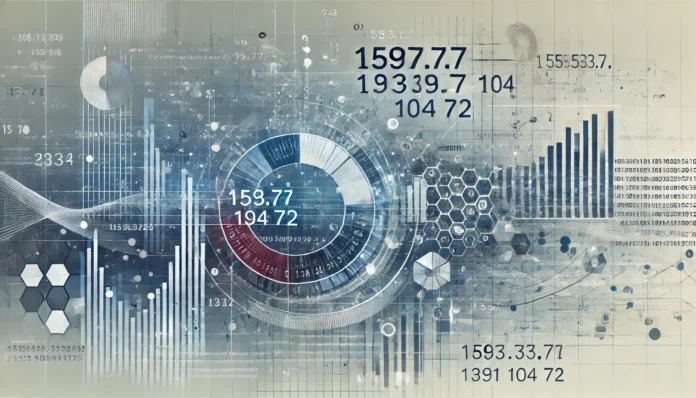Unpacking 1593.71-393.71 104 72
When you first come across a combination like 1593.71-393.71 104 72, you might wonder what it all means.
It sounds like a secret code or maybe even a unique identifier for something valuable.
Let’s break it down and see what this number could represent.
Real Concerns and Questions
You might be asking:
- Is this a serial number, or does it represent something specific in a financial sense?
- Could it be part of an equation or a set of coordinates?
- What if it’s something more specific, like a catalog number?
These are questions many people might have when encountering numbers like “1593.71-393.71 104 72.”
A Mathematical Perspective
At first glance, “1593.71-393.71 104 72” could easily be mistaken for a complex calculation.
Maybe you’re seeing numbers like this in your own work, and it has you wondering about their significance.
In many cases, combinations like this can represent calculations in finance or data analysis.
Imagine breaking it down:
- 1593.71 – 393.71: This subtraction might indicate a difference in two financial values, like stock prices or budget figures.
- 104 72: These numbers could relate to classifications, maybe codes for products or categories.
In a practical context, numbers like “1593.71-393.71 104 72” could pop up when you’re looking at year-end reports or budgeting spreadsheets.
You’re comparing numbers, looking at variations, and trying to make sense of the trends.
Could It Be Coordinates or Identifiers?
Another idea?
“1593.71-393.71 104 72” could represent coordinates or identifiers.
You’ve seen strings of numbers like this on maps, right?
This particular set doesn’t immediately jump out as GPS coordinates, but there’s a similar structure.
It could be an identifier for:
- Geographic locations: Maybe this represents a specific area in a survey.
- Library categorization: In some libraries, unique codes are assigned to books or collections.
Numbers like these often have hidden meanings depending on the context.
Why Financial Analysts Might Care About “1593.71-393.71 104 72”
In finance, we’re always dealing with numbers that might look cryptic at first.
If you’re in accounting or financial analysis, numbers like “1593.71-393.71 104 72” could easily relate to transactions, invoices, or even expense reports.
You might think:
- Is this a sum total or a difference?
- Does it represent multiple values, or is it split into categories?
Sometimes, financial data gets compiled into big sets, and specific numbers like this can help track different elements within a report.
Here’s How Financial Analysts Use This:
- Budget Analysis: Breaking down expenditures and seeing variances is key, especially if you’re trying to see where discrepancies come from.
- Stock Tracking: A number that looks like “1593.71” could be a high point, and “393.71” could be a significant low.
Why It’s Relatable
Maybe you’re a small business owner managing your expenses.
Seeing numbers like these might help you figure out whether certain areas need more budget or attention.
It’s all about finding those numbers that stand out.
Practical Examples: How Might You See “1593.71-393.71 104 72” in Daily Life?
You might not realize it, but we come across similar codes in everyday situations.
Think of how numbers like these can pop up:
- Invoices: Seeing a series like “1593.71-393.71 104 72” could easily mean you’ve got a breakdown of costs, taxes, or discounts.
- E-commerce: Many products have detailed codes, especially when dealing with multiple suppliers or international orders.
Storytime
Let’s say you’re a purchasing manager.
You get an invoice with a reference number that includes “1593.71-393.71 104 72.”
It’s your job to track down where this product is coming from, where it’s going, and why the cost breakdown looks the way it does.
You call up the supplier, and they confirm it’s a unique identifier related to a specific batch, detailing its journey and any applicable costs.
By understanding how these codes work, you get a clearer picture of the process.
FAQ Section
Q: What could “1593.71-393.71 104 72” represent in business?
A: This could easily be a reference number, financial breakdown, or even an identifier within a larger database.
Q: Why do numbers like “1593.71-393.71 104 72” seem so random?
A: Often, they’re only random to the untrained eye.
In business, finance, or logistics, such numbers can carry loads of information.
Q: How can I figure out what “1593.71-393.71 104 72” means for my work?
A: Context is key! Look at where the number appears—whether it’s on an invoice, in a report, or tied to a specific product.
Understanding where it’s used helps decode its purpose.
Wrapping Up with “1593.71-393.71 104 72”
To someone, “1593.71-393.71 104 72” might look like a jumble of numbers, but with the right lens, it’s all about context.
If you’re in finance, business, or any field that deals with data, understanding codes like these helps you keep tabs on important details.
As we discussed, this might represent anything from a financial difference to a product code.
It all depends on where it’s coming up in your work.
When you run into numbers like these, take a moment to dig a little deeper.
After all, every code tells a story.
And “1593.71-393.71 104 72” just might be the next one you’re about to solve.
